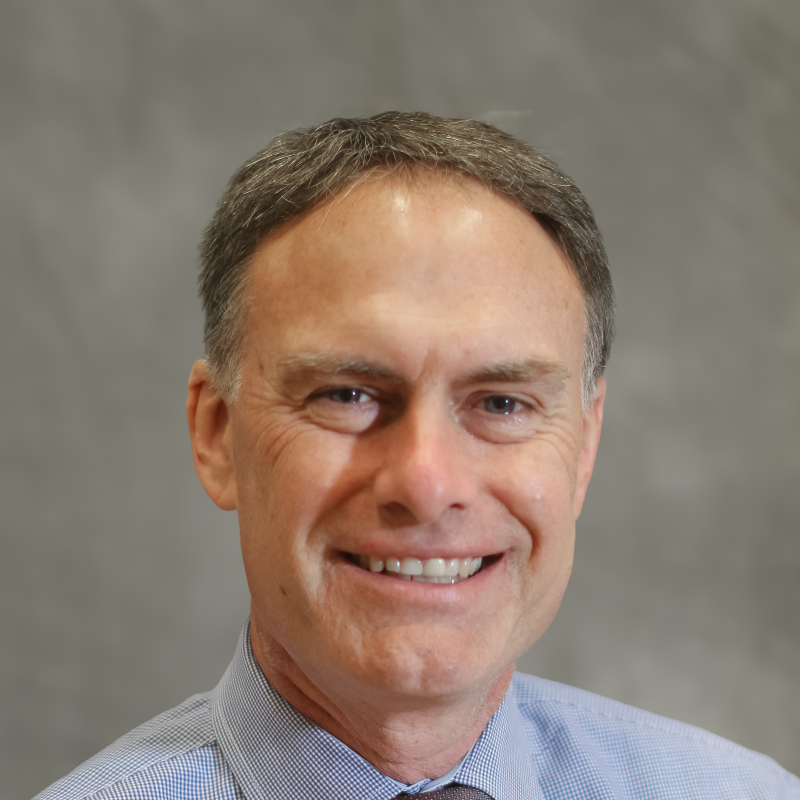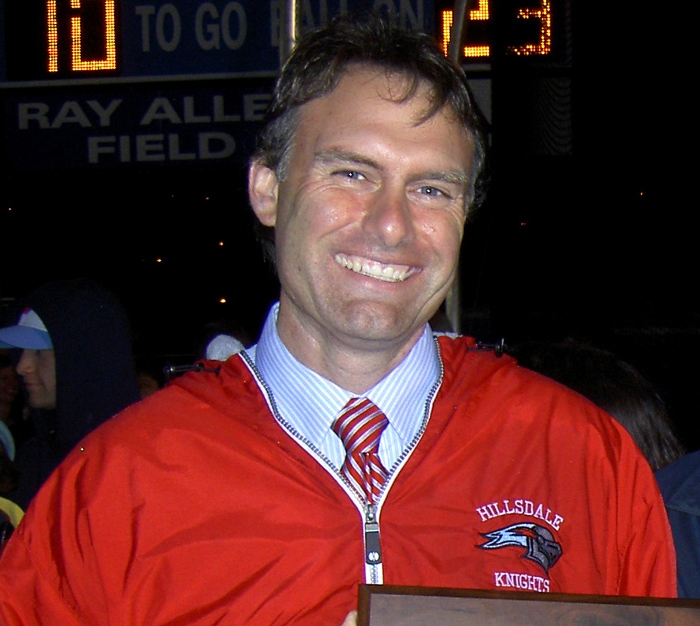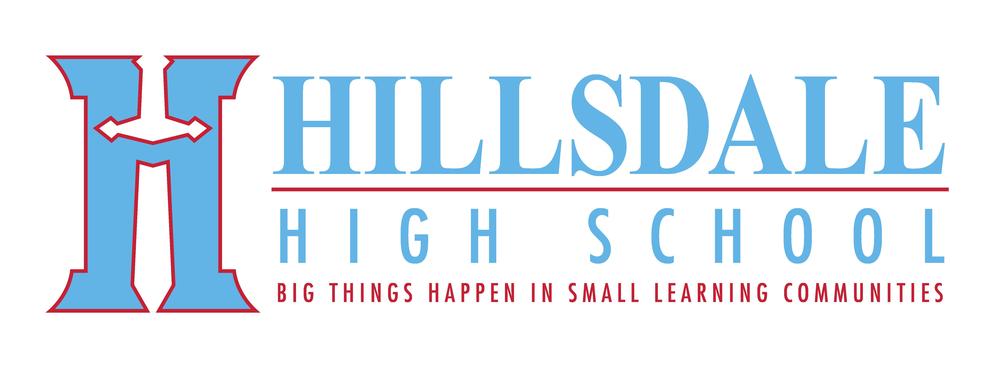
Jeff Gilbert, ’89, MA ’90
Principal Jeff Gilbert, ’89, MA ’90, leads community and change in San Mateo, Calif.

Designing and inspiring for equity
Principal Jeff Gilbert, ’89, MA ’90, leads community and change in San Mateo, Calif.
By Barbara Wilcox
At San Mateo, Calif.’s Hillsdale High School, students undertake learning strategies more often associated with graduate schools. They defend portfolios, revise papers, meet regularly with advisers, and learn core subjects in one of three Small Learning Communities (SLCs) that starting in 2002 have made up the Hillsdale campus.
Folks at Hillsdale lay much of their innovative school’s success to Hillsdale Principal Jeff Gilbert, ’89 (History), MA ’90, whose leadership is honored in 2017 with the Stanford Graduate School of Education’s Alumni Excellence in Education Award.
Gilbert helped reorganize Hillsdale, a 1,200-student public comprehensive high school, in partnership with the School Redesign Network of the Stanford Center for Opportunity Policy in Education. The complex redesign required assent and hard work by many stakeholders, including veteran teacher leaders, unions, elected officials, parents and students. Gilbert’s continued ability to inspire confidence and unite constituencies infuses the Hillsdale campus, which now draws school researchers and reformers from around the globe.
Since adopting the SLC format, Hillsdale’s graduation rate has risen roughly 11 percent. In 2002, only 18 percent of Latino and African-American students at Hillsdale took ninth-grade algebra or 10th-grade chemistry. Today, all of them do. The overall pass rate in ninth and 10th grade math and science rose from 80 percent in the first year of SLCs to 94 percent in 2016-17.
In 2014, California published a School Climate Report Card for each school in the state, based on student and staff surveys, and Hillsdale scored in the 99th percentile both for similar schools and for all schools.
“[Former STEP director Prof.] Rachel Lotan always said, and now I say, ‘Learning is a social phenomenon,’” Gilbert said. “What is the environment you’re creating so that students feel safe and supported and trusted? If you don’t tend to that, you’re putting students at risk.
“At Hillsdale, we base our decisions on equity, personalization and rigor.”
Said Hillsdale teacher Michael Silva, who nominated Gilbert for the award: “He’s just an amazing person. Because of his open mind and courageous approach, our staff feels bold and empowered to continuously try new things.”
Gilbert’s path to teaching was a short one – literally. As a Stanford junior, he was mulling his career prospects on a walk to his dorm from the history offices in the Quad. The School of Education is a few yards from History Corner, and he popped in.
“David Tyack interviewed me. We spoke about the expectations that follow you if you’re from a small town, as I was, and come to Stanford. What great things are you going to do? Medicine? Law? I had to take some time thinking to get to the point that I felt I could do what I wanted to do.”
Later, this shaky confidence would fuel Gilbert’s passion for curriculum and pedagogy that prepare students for mastery, including a senior thesis and portfolio defense. When he came to Hillsdale in 1995 as a history teacher, a core group of colleagues including many STEP alumni were already thinking about reform.
“I fell into a place that was really hungry to figure things out,” Gilbert said. “If your eyes were open, you could see that it wasn’t equitable at all. These big public high schools were not designed to meet the needs of all students. It just ate at you as a teacher.
“That led us back in a lot of ways to Stanford. We read Prof. Linda Darling-Hammond’s The Right to Learn. The work of Deborah Meier at Central Park East. The Coalition of Essential Schools. These things really opened your eyes to the idea that design matters. If all my history students had the same English teacher; if we had a little more time to get to know them as students …
“We had legendary dine-and-discuss meetings with Linda Darling-Hammond. Then, in 2000, we wrote what was in some ways a visionary accreditation report and action plan."
Gilbert left in 2001 to help found the East Palo Alto Academy in partnership with Stanford, then returned in 2005 as Hillsdale’s principal. Many of Hillsdale’s important features, including the senior defense, advising relationships and resubmission policy for student work, exist at much smaller East Palo Alto.
“It was the toughest decision of my life to leave East Palo Alto,” Gilbert said. “That charter school did heroic work. But I also felt that there are hundreds of students in schools like Hillsdale that need the same sort of attention.”
Gilbert’s leadership was put to the test on a traumatic day in August 2009, when a former student entered the Hillsdale campus with 10 pipe bombs and other weapons, detonating two. Faculty including Gilbert restrained the attacker before anyone was injured. Gilbert – who had repeatedly sought mental health help for the student when he was at Hillsdale – reflected on his appreciation of the community’s resilience.
“The bombing exposed our educational community to the greatest possible threat and reminded all of us that the emotional and physical safety of our staff and students is truly the first priority,” Gilbert told a writer at Stanford. “Ultimately, we are dependent upon each other for our wellness and for the healing that is still happening years later.
“We second-guessed every move, as people do, but I will never forget the parent meeting we had the day after the bombing, when over 500 parents gave our staff a standing ovation for the school's response.”
Today, Gilbert advises dozens of visitors yearly, from the Navajo Nation to Singapore and Brazil, on how to consider change.
“It’s the same stuff we read about 25 years ago. It’s not revolutionary,” Gilbert said. “The biggest thing is what does it take; what are the politics of it? What Profs. Jeffrey Pfeffer and Robert Sutton call the knowing-doing gap. That’s the interesting conversation at school level -- how to manage change, get consensus, get people on board.
“There are costs, too. If it were easy, everyone would be doing it.
“But I talk to principals all the time who feel isolated and alone in the work. I never once felt that. And the Stanford connections are a big part of that. We want to contribute to how to rethink public education.”
Learn more about Hillsdale High School’s small learning communities and the complex path of the school’s redesign.
Learn about Stanford’s School Transformation Study Visits to Hillsdale and other schools.
Watch Hillsdale grad Riki Urata’s video on the school’s Senior Defense, including an interview with Jeff Gilbert.
Explore Hillsdale's reaction to the 2009 bombing in a story and video by 2013 Hillsdale grad Alana Ridge.
For more information about the GSE Alumni Excellence in Education Award reception, and to register for this special event, please visit the GSE’s Reunion Webpage.


